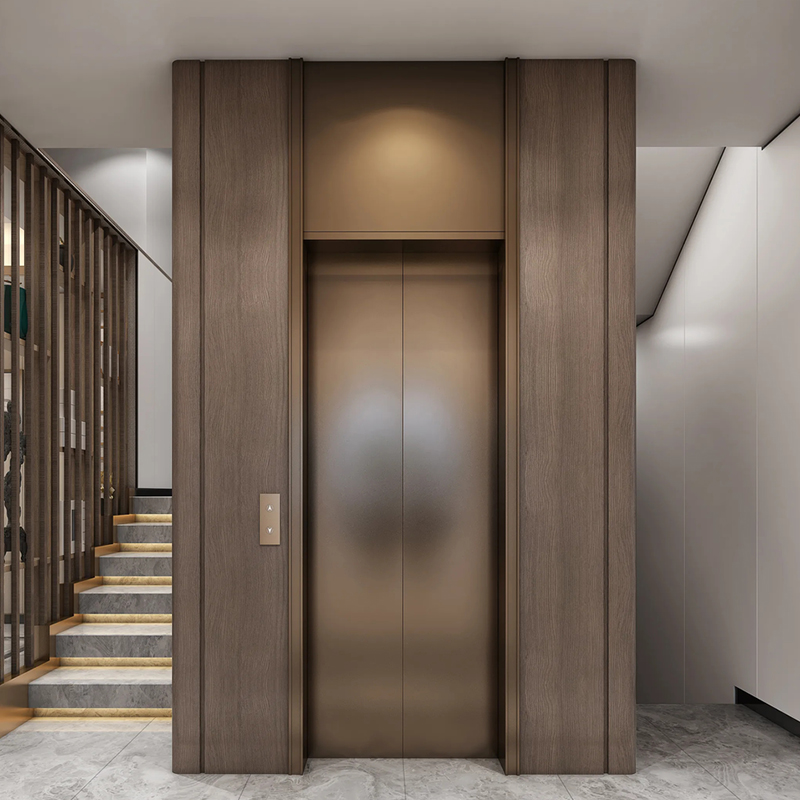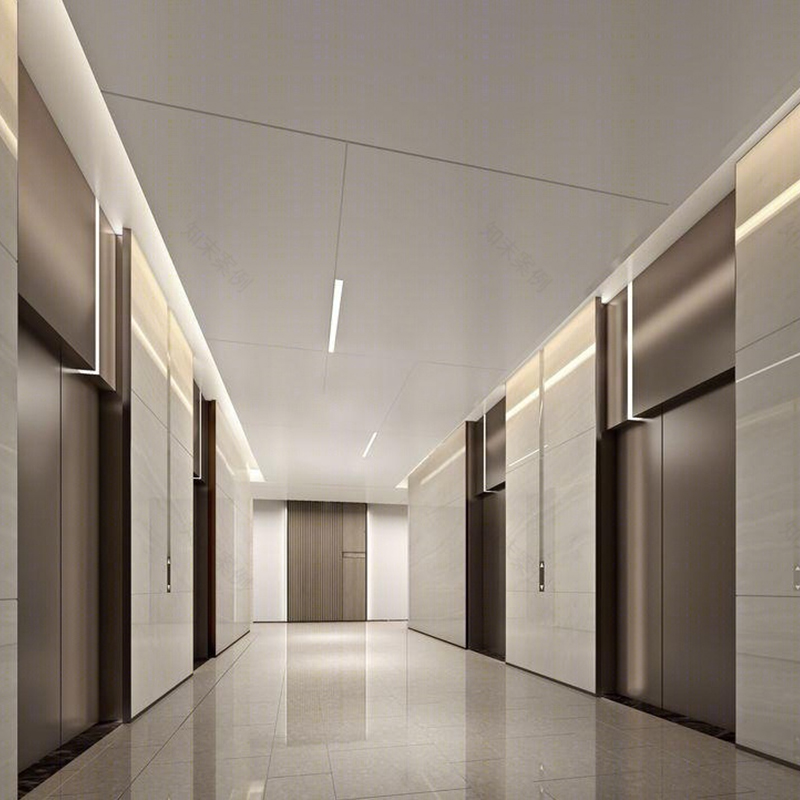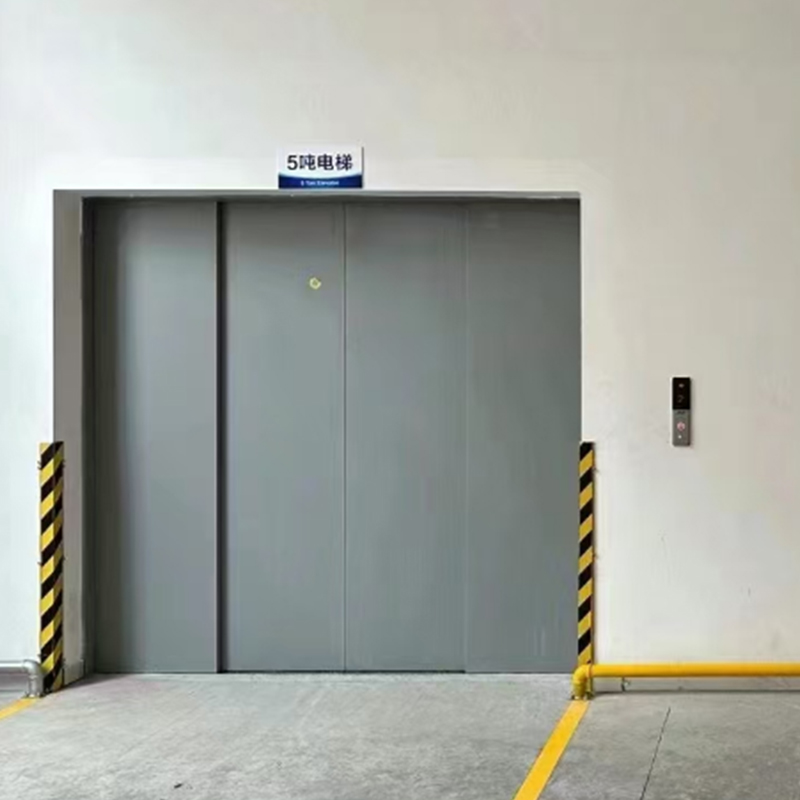
How does the Residential Traction Platform Elevator achieve smooth lifting?
Posted by Admin | 05 Jun
In modern residences, the Residential Traction Platform Elevator brings great convenience to people's up and down travel. When people take the elevator to shuttle between floors easily, they may be curious: How does the residential traction platform elevator achieve smooth lifting? Behind this is a set of exquisite operating mechanisms and technical principles.
The core power of the lifting and lowering operation of the residential traction platform elevator comes from the traction drive system. It is mainly composed of key components such as traction machine, wire rope, counterweight, etc., and each component cooperates with each other to complete the lifting task of the elevator. The traction machine, as the power source of the entire system, is like a precise "power heart", which drives the drum to rotate through the motor. The drum is tightly wound with wire rope, and the two ends of the wire rope are connected to the elevator car and the counterweight device respectively, which builds the basic structure of the elevator lifting.
When the elevator needs to rise, the motor of the traction machine starts and starts to drive the drum to rotate in the forward direction. As the drum rotates, the wire rope wrapped around it gradually tightens. Since the wire rope is connected to the car, the car is steadily pulled upward under the tension of the tightened wire rope, thus realizing the process of rising. This process seems simple, but it actually involves many mechanical principles and precise control. For example, the material and strength of the wire rope need to be carefully selected and designed to ensure that while bearing the weight of the car and passengers, it can reliably transmit the tension to ensure the safety and stability of the rising process.
When the elevator needs to descend, the motor of the traction machine rotates in the opposite direction. At this time, the wire rope gradually relaxes, and the car begins to move downward under the action of its own gravity. However, the descent of the elevator does not rely entirely on the free fall of gravity, but is carried out in an orderly and stable manner under the coordinated action of the traction machine and the control system. During the descent process, the traction machine needs to provide appropriate braking torque to control the speed of the car descent to avoid safety hazards caused by excessive speed. This is like tying a "safety rope" to the car, which not only allows the car to descend smoothly, but also ensures the safety of the descent process at all times.
In the entire operation process of the elevator, the control system plays a vital role. It is like a "smart brain" that accurately adjusts the running speed and torque of the traction machine. During the start-up phase of the elevator, the control system will gradually increase the torque of the traction machine according to the preset program, so that the car can smoothly accelerate up or down to avoid sudden setbacks. When the elevator is about to reach the target floor, the control system will accurately control the traction machine to reduce the speed so that the car can accurately and smoothly stop at the floor position. Whether it is rising or falling, the control system monitors the operating status of the elevator in real time, and dynamically adjusts the traction machine according to the information feedback from various sensors, such as the car position, running speed, load, etc., to ensure that the elevator always maintains a stable and safe operating state.
In order to better understand the operation of the elevator, we can further analyze the role of its key components. The counterweight device plays an indispensable role in the operation of the elevator. Its function is to balance the weight of the car. By reasonably configuring the weight of the counterweight, the workload of the traction machine can be effectively reduced. When the load in the car changes, the weight difference between the counterweight device and the car is always kept within a certain range, making the driving force required by the traction machine during operation more stable, thereby improving the energy efficiency and operation stability of the elevator. For example, when there are many passengers and heavy loads in the car, the counterweight device can form a better weight balance with the car, reduce the burden on the traction machine, and ensure that the elevator can still run smoothly.
The design and performance of the traction machine also directly affect the operation effect of the elevator. Modern residential traction platform elevators mostly use permanent magnet synchronous traction machines, which have the advantages of high efficiency, energy saving, smooth operation, and low noise. The permanent magnet inside can generate a strong and stable magnetic field, interact with the rotor of the motor, and achieve efficient energy conversion. At the same time, since the permanent magnet synchronous traction machine does not have a traditional reduction box, the mechanical noise and energy loss caused by gear friction are reduced, making the elevator quieter and more energy-efficient during operation.
As an important component connecting the car and the counterweight, the quality and maintenance of the wire rope are also crucial. The wire rope needs to have high strength, wear resistance and good flexibility. During the long-term operation of the elevator, the wire rope will be subjected to various stresses such as stretching and bending, and it is easy to wear and break wires. Therefore, it is necessary to regularly inspect and maintain the wire rope, and replace the severely worn wire rope in time to ensure the safety of the elevator operation. In addition, the tension of the wire rope also needs to be balanced, otherwise it will affect the smooth operation of the elevator and may even cause safety accidents.
In addition to the above core components and operating principles, residential traction platform elevators are also equipped with a series of safety protection devices to ensure that the elevator can protect the safety of passengers in various unexpected situations. For example, the speed limiter and the safety clamp are an important combination of safety protection devices for elevators. The speed limiter can monitor the running speed of the elevator in real time. Once it is found that the elevator speed exceeds the set safety value, it will immediately trigger the safety clamp action. The safety clamp will quickly clamp the guide rail and firmly fix the car to prevent the elevator from falling due to overspeed, thereby avoiding serious accidents. The buffer is installed at the bottom of the elevator shaft. When the elevator falls accidentally, the buffer can absorb the impact force of the car, reduce the collision force when the car lands, and protect the lives of passengers.
The elevator is also equipped with a door lock device, a door protection device, etc. The door lock device can ensure that the elevator door is always closed during operation to prevent passengers from accidentally falling or being pinched. Door protection devices, such as light curtain sensors or safety touch panels, will immediately stop the door closing action and reopen the elevator door if an obstacle is detected during the closing process of the elevator door to avoid pinching passengers. These safety protection devices work together with the elevator's operating mechanism to build a safe and reliable elevator operating environment.
From starting to rising to smooth parking, from safe descent to precise braking, every operation of the residential traction platform elevator embodies complex and exquisite technical principles. The coordinated work of various components, the precise adjustment of the control system, and the reliable guarantee of the safety protection device together create a smooth and safe operation effect of the elevator. With the continuous advancement of science and technology, the operating mechanism and technology of residential traction platform elevators will continue to be optimized and improved, bringing a more convenient, comfortable and safe vertical transportation experience to people's lives.
-
 Founding Road, Qidu Linhu Economic Zone, Wujiang City, Jiangsu Province, China
Founding Road, Qidu Linhu Economic Zone, Wujiang City, Jiangsu Province, China
-
 [email protected]
[email protected]
-
 +86 17701557926/+86 0512-63818375
+86 17701557926/+86 0512-63818375


 En
En English
English русский
русский Español
Español عربى
عربى





